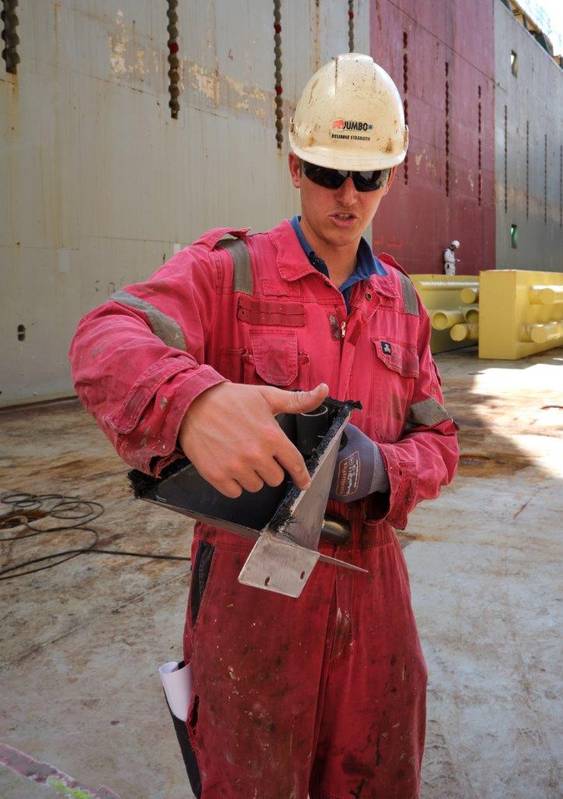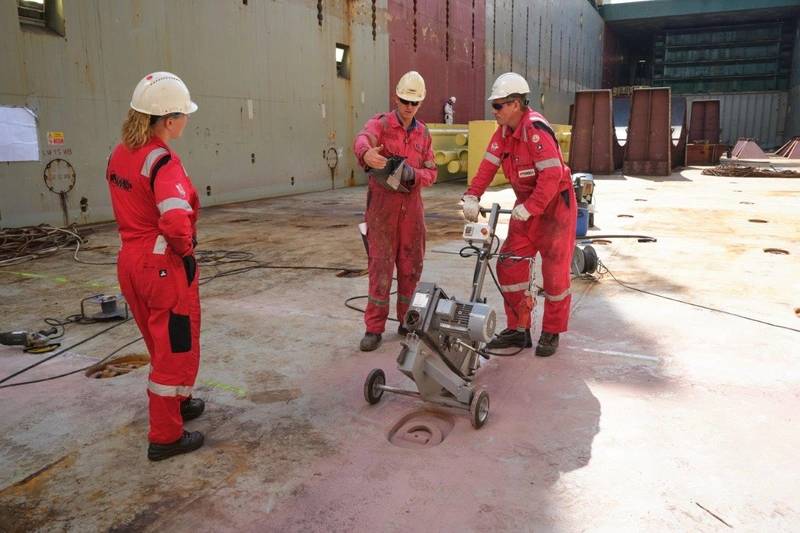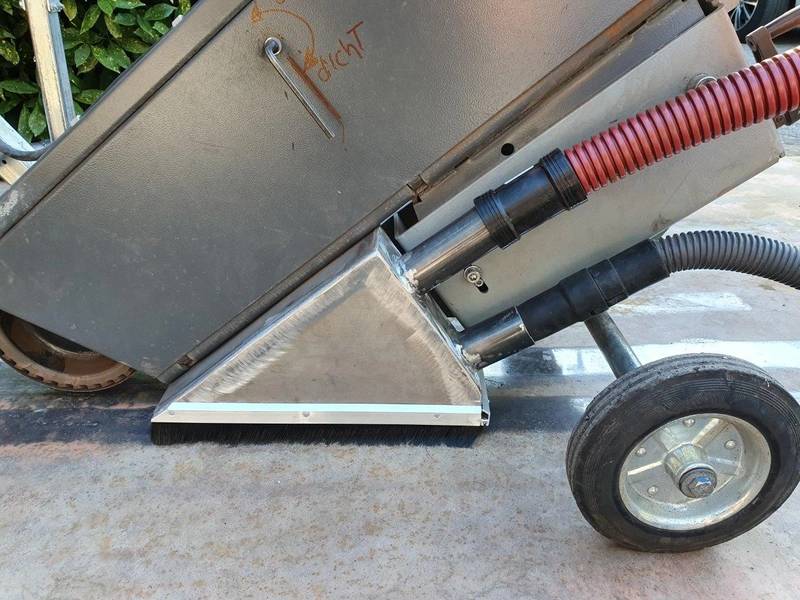Flash Rush Meets its Match, Jumbo CO Innovates
Jumbo developed in-house an innovation that has promise to help solve the issue of persistent flash rust caused by the removal of temporary welded securings on board its fleet of heavy lift vessels.
Jumbo Chief Officer and part-time Master’s student Bob Heikoop developed the prototype, and according to the company iintial results show that the device is not only faster than existing methods of removing temporary weldings, it is also cleaner for the environment, healthier for users, and improves the appearance of the ship.
While Jumbo’s nine heavy lift vessels are technically and operationally in excellent condition, their decks and hull sides have a decidedly rusty appearance, known as flash rust. Flash rust is caused by the corrosion of steel particles dispersed during the removal of temporary welded securings, a process requiring the use of cutting, gouging and grinding tools. The steel and paint particles formed during the removal process can also be harmful to the environment and to human health. Further adding to the list of negative consequences, the removal of the temporary welded securing is a time-consuming and uncomfortable task for the ships’ crews.
- Practical problem with green potential
This situation did not go unnoticed to Jumbo Chief Officer Bob Heikoop. Heikoop had started a Master’s degree in Marine Shipping Innovations at the Maritime Institute Willem Barentsz in the Netherlands in 2018, and was looking for a subject on which to focus his final thesis.
“I wanted to combine a practical problem that Jumbo was facing with a subject that was important to society in terms of sustainability,” said Heikoop. “Solving the flash rust problem could achieve both of these. First: Reducing our environmental footprint by reducing the release of paint and steel particles. Second: Preventing, or at least reducing the rusty appearance.”

- Modifications
After concluding that welding was the quickest, most efficient and most cost-effective way of securing the temporary sea-fastenings, the main question that Heikoop needed to address was a new way to remove the sea-fastenings that simultaneously collected steel and paint particles.
The solution was a Fein GIMS-75 belt sander, which Heikoopmodified with the addition of a spark/molten steel particle catcher, an extraction system, and a collection container. The performance of the resultant prototype device was then verified within four separate parameters:
- Removal of paint layer,
- Removal of top part of temporary welding,
- Removal of bottom part of temporary welding and
- Flattening of surrounding paint layer.
The results were overwhelmingly positive.
“We were very enthusiastic about the outcome,” said Heikoop. “The modifications made to the GIMS-75 means that it catches and removes the steel and paint particles. In terms of sustainability, there are no particles entering the environment. But it is also much faster than the current way of working – on average, three times as fast – which makes it very interesting commercially.”
The prototype also yielded benefits in terms of human health, as Heikoop explains: “For the person using the existing method, this meant spending the whole day working on your hands and knees with an angle grinder on the deck of the ship. Whereas users can walk behind this prototype in a standing position. It is better ergonomically and it produces far fewer vibrations.”


